You may have your garden’s plants figured out, but have you given any thought to how you could use boulders in your landscape? If not, then consider this your formal invitation.
It’s natural for stone to be merely an afterthought in landscape design.
Plants tend to get most of the attention, since they’re arguably what makes a landscape a garden. By comparison, who cares about a bunch of big ol’ rocks?
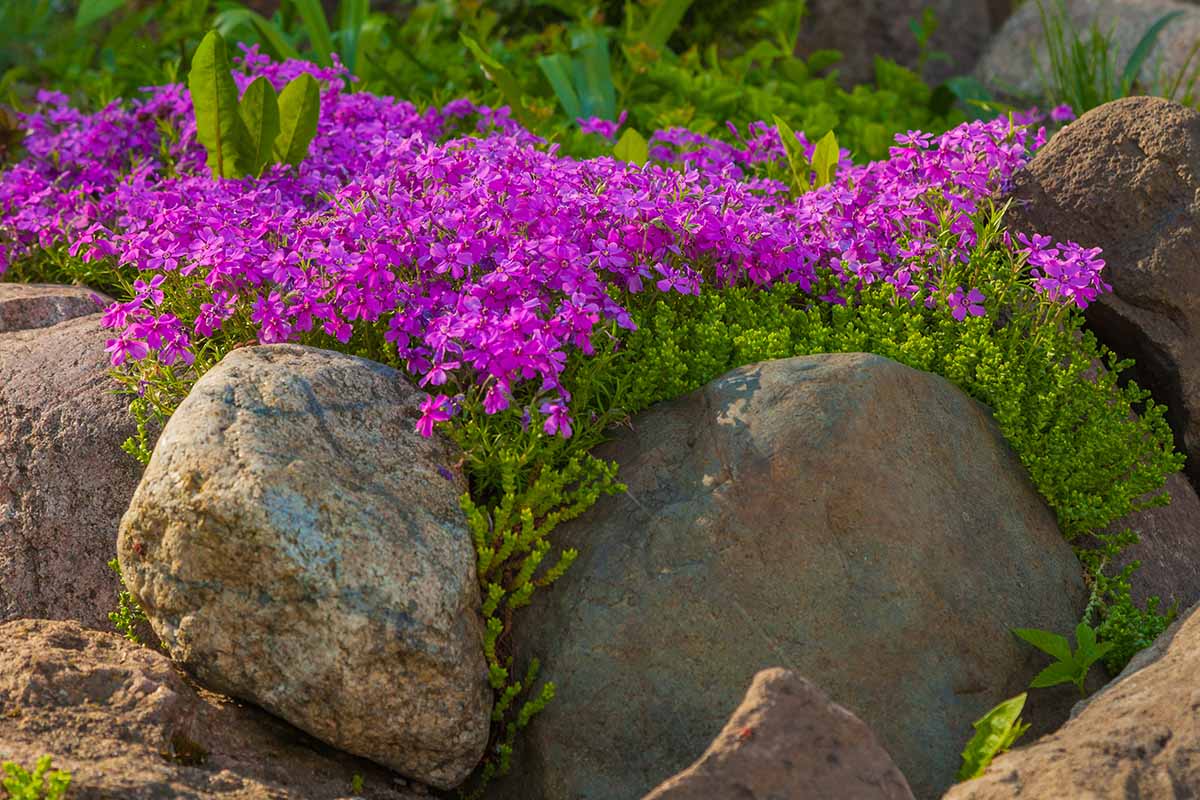
We link to vendors to help you find relevant products. If you buy from one of our links, we may earn a commission.
Every landscaper should, in my opinion. You’d be surprised at how aesthetic a well-placed boulder or two can be.
As an inorganic contrast to the living, breathing flora in your garden, large stones create aesthetic opportunities that you simply wouldn’t have with just plants alone.
But you shouldn’t be willy-nilly and just stick large rocks on the ground all haphazardly, though. This guide will walk you through everything a home landscaper needs to know and more!
Here’s what we’ll be discussing:
What You’ll Learn
Boulders 101
Boulders are an important element of hardscaping, the non-living elements of landscaping such as brick, wood, and concrete.
But it’s important to clarify exactly what they are, especially in comparison to other types of stones.
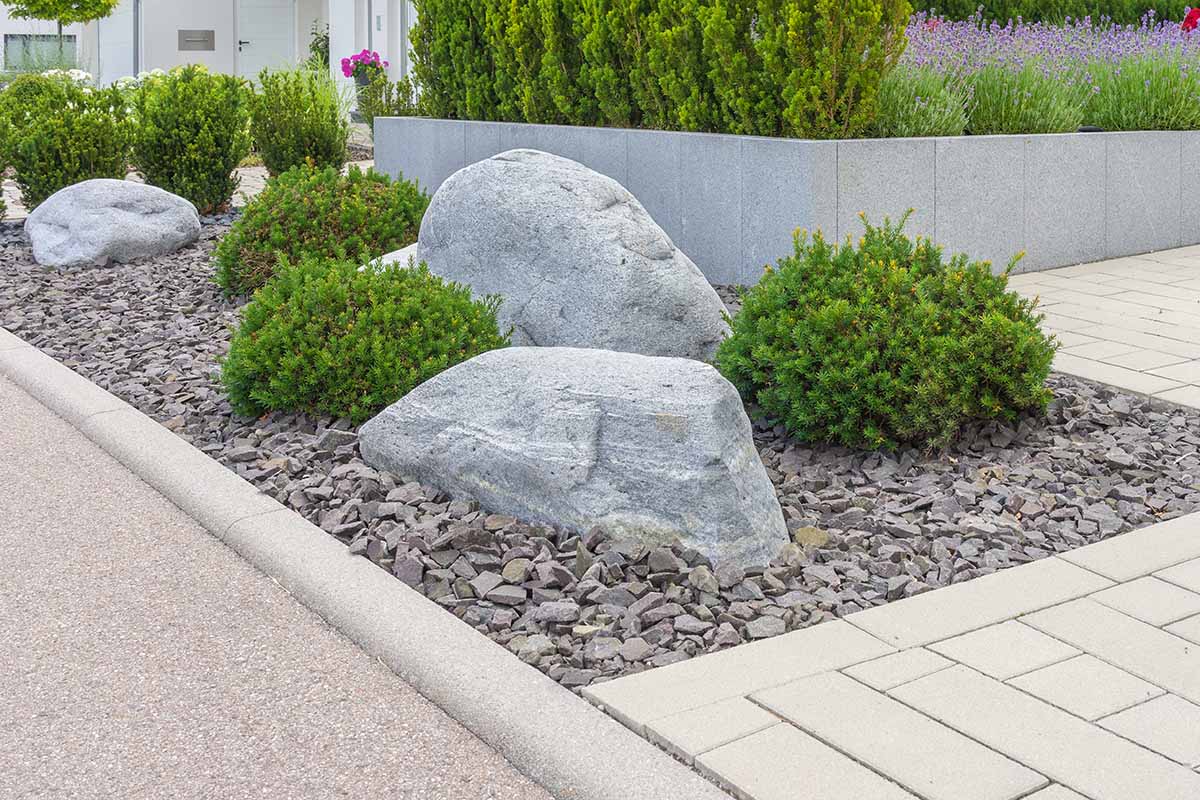
When most people think “boulder,” they picture a massive, hard-to-move stone like the one Sisyphus eternally pushes up a hill in Greek mythology, or perhaps the one that rolls after Indiana Jones in “Raiders of the Lost Ark.” But the true definition is actually a bit broader than that.
In geology, a boulder is any fragment of stone with a diameter larger than 10 inches. Any smaller, and you’re in the realm of cobbles, pebbles, and gravel, which landscapers use for pathways, waterways, rock gardens, and the like.
As you can imagine, boulders come in a wide range of sizes. Some are small enough for a single person to move with ease, while others require heavy-duty machinery.
Others, like the famed Giant Rock in the Mojave Desert – which is seven stories tall and covers 5,800 square feet – aren’t movable at all, at least not without some dynamite, or maybe Superman.
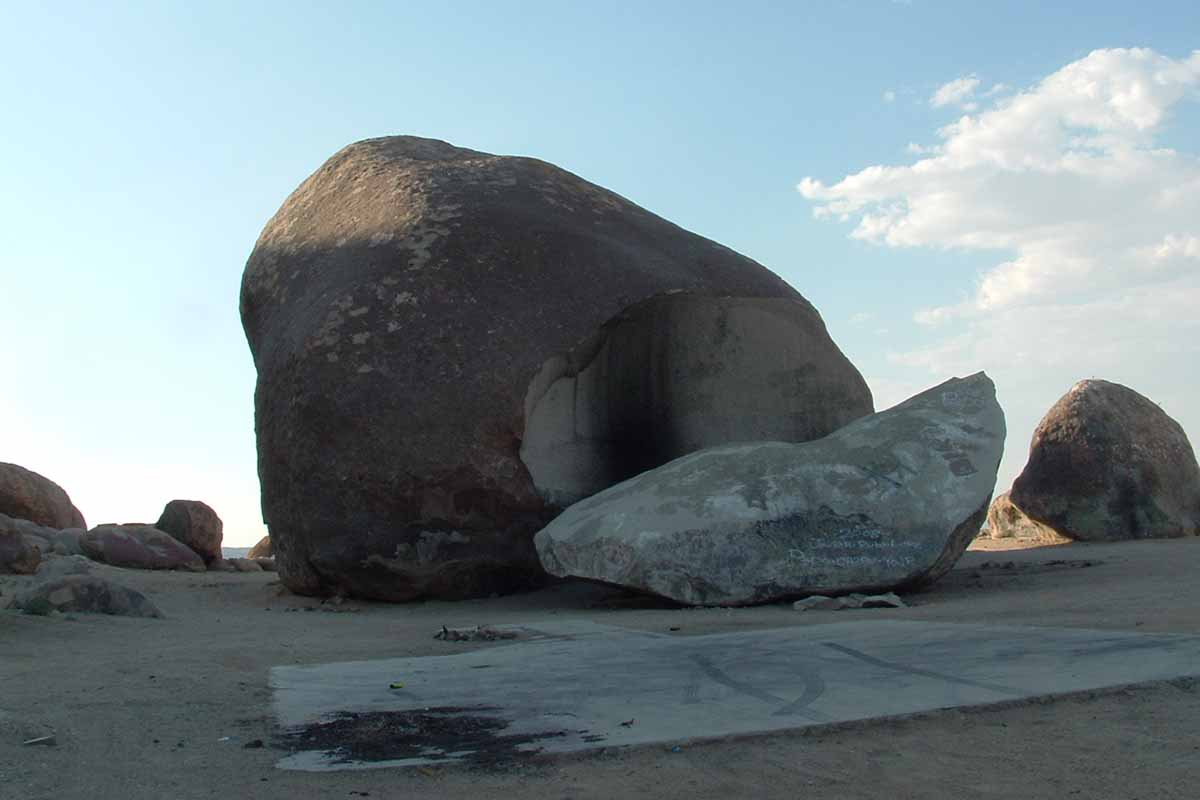
In general, they come in two forms: round and angular.
Round boulders have a relatively smooth surface and come from sand-and-gravel deposits of water-washed rock like sandstone and granite, which have been worn down by rain, wind, and sand over eons.
Angular boulders are more jagged, with flatter faces. These are harvested from quarries using heavy machinery and explosives, and are composed of materials such as basalt, granite, quartzite, and sandstone.
Other materials are also available, such as limestone, slate, and even marble! Mica can be used as a color amendment, while mossy growth enables a striking green look. Speaking of…
Landscaping stone is available in more colors than you’d imagine.
Along with the standard grays, browns, and tans, it’s available in pinks, reds, yellows, golds, and more. Add different combos to the mix, and you have dozens of options to choose from!
Why Use Boulders?
If you’re going to be lugging heavy, potentially expensive rocks into your yard, it helps to have a “why” or two. So here are three reasons to incorporate boulders into your landscaping:
1. Aesthetics
There’s no doubt about it: the right boulders, placed in the right spots, look pretty cool, adding texture and interest to the landscape.
I mean, stones may not bring a tear to your eye like beautiful plants can, but they definitely have their own unique charm.
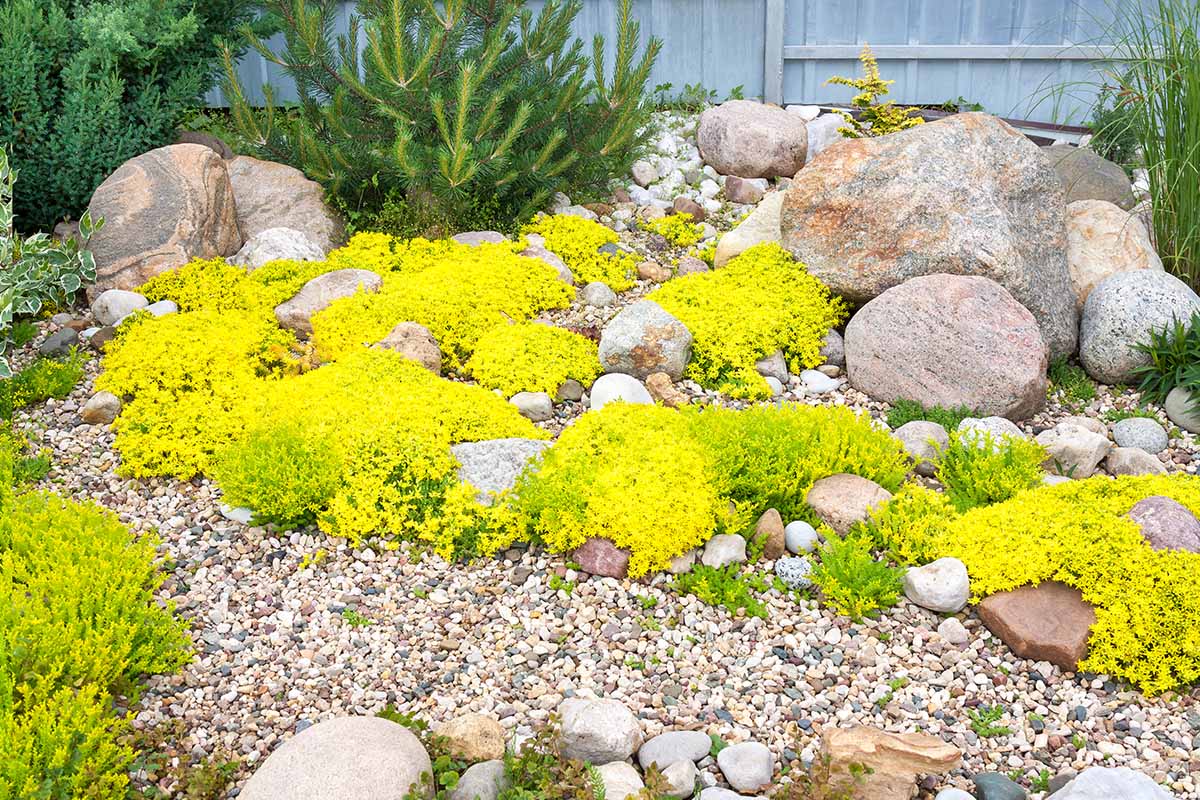
They add visual interest in many different landscaping scenarios.
In a typical garden, they provide an earthy aesthetic that functions as a complimentary accent to your lush, green plants. In a rock garden, they can actually be the focus, with the plants playing the accompanying role.
2. Creates Structure
Boulders don’t just look nice. They can also be the building blocks for structures within your landscape.
A bunch of properly-stacked stones can form a retaining wall. An ascending line can function as stepping stones for walkers. And don’t forget about the way they can be used as borders for planting beds and water features!
The structures formed are very solid and durable, too. It’s easy to damage plants, but it’s a bit tougher to put a dent in stone. And speaking as a former kid, I know that a landscape full of large rocks provides plenty of climbable and jumpable obstacles for children to play on!
3. Low Maintenance
If you’ve been in the gardening game for a while, then you know that plants can be delicate, finicky, and needy organisms. It can be a ton of work to keep them alive, much less in top form.
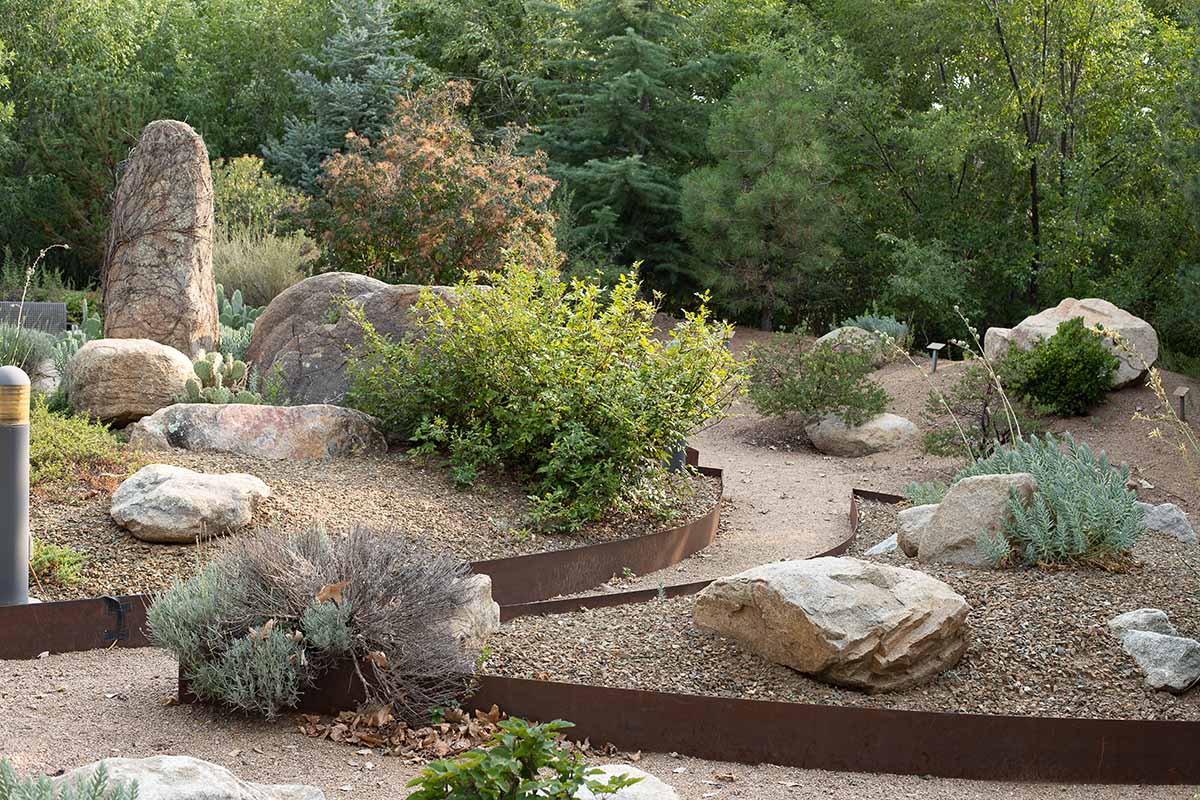
That’s where boulders can provide a breath of fresh air. There’s a reason pet rocks were popular with neglectful pet owners: stones are the easiest thing in the world to take care of.
They don’t require any sun, water, or fertilizer. They don’t wilt, attract pests, or become sick. And save for maybe a freak lightning strike, they’re tough enough to withstand anything nature throws at them.
Rocks are also a fantastic and thirstless tool for xeriscaping, landscaping in a way that requires little to no irrigation. You can learn more about xeriscaping in our guide.
Selection Tips
When picking out boulders for your landscaping, keep these pointers in mind:
Consider Local Geology
When you are considering ginormous stones for your landscape, ask yourself: what kind of rock occurs naturally in this region?
The right choice of stone compliments the landscape, while the wrong ones can make it look a bit unnatural. If you live in Arizona near the Grand Canyon, then red sandstone would look fantastic. If you’re a Missourian like myself, then granite works wonderfully.
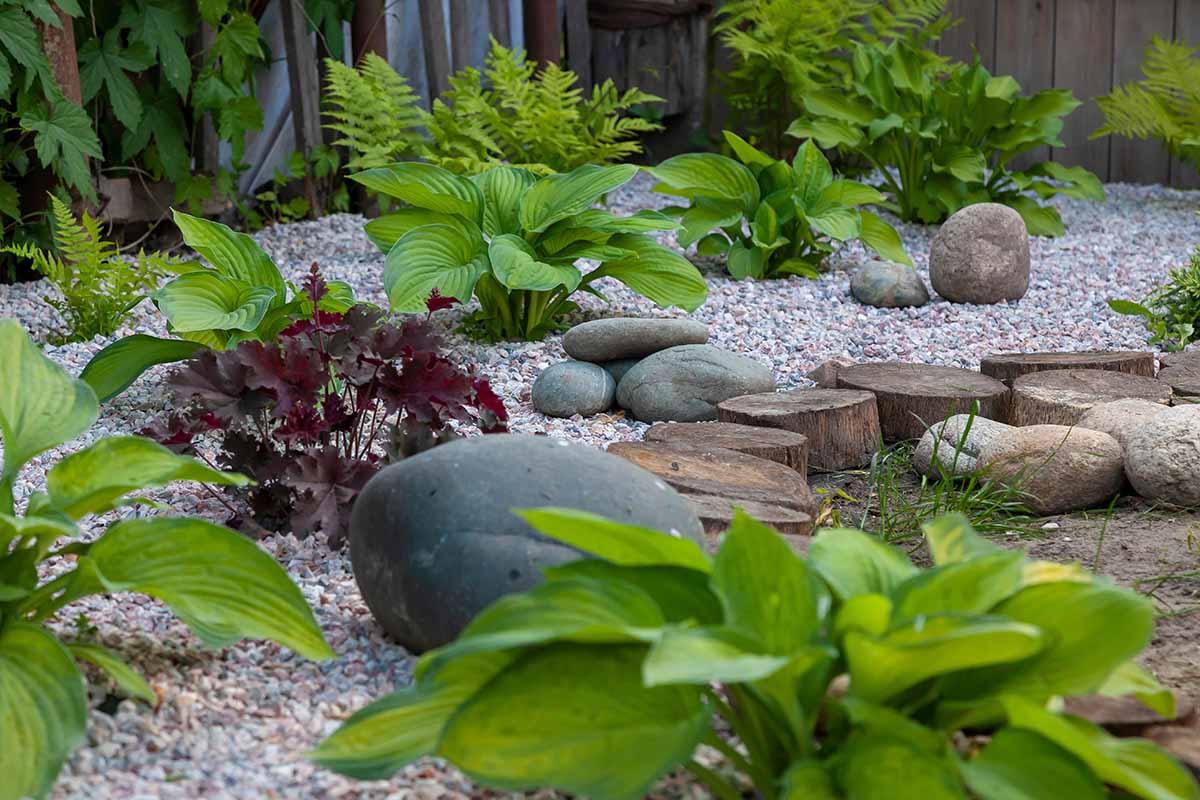
Choosing a rock type that’s alien to your area isn’t the end of the world, but just like native plantings are recommended for a natural aesthetic, so is native stone.
On the other hand, you might want to create a contrast in your garden, choosing colors and textures from different geographical regions.
Have a Plan
Boulders can be expensive, hard to move, and even harder to remove. So going in without a basic design could end up being an expensive hassle.
And since large stones are cumbersome and natural focus points, it is best to choose your rock placement before deciding what you’ll plant.
There are all sorts of digital landscaping tools you can use to make detailed, beautifully-rendered designs – but pencils, graph paper, and a super long tape measure can be just as practical for plotting where your rocks will sit in relation to the other elements in your garden.
Go Big, Not Massive
It’s easy to underestimate the size of the boulders you need for your property.
They have a weird way of looking bigger at the buying lot, yet when you get them home they can appear just a bit too small on your property. So don’t be afraid to go big!
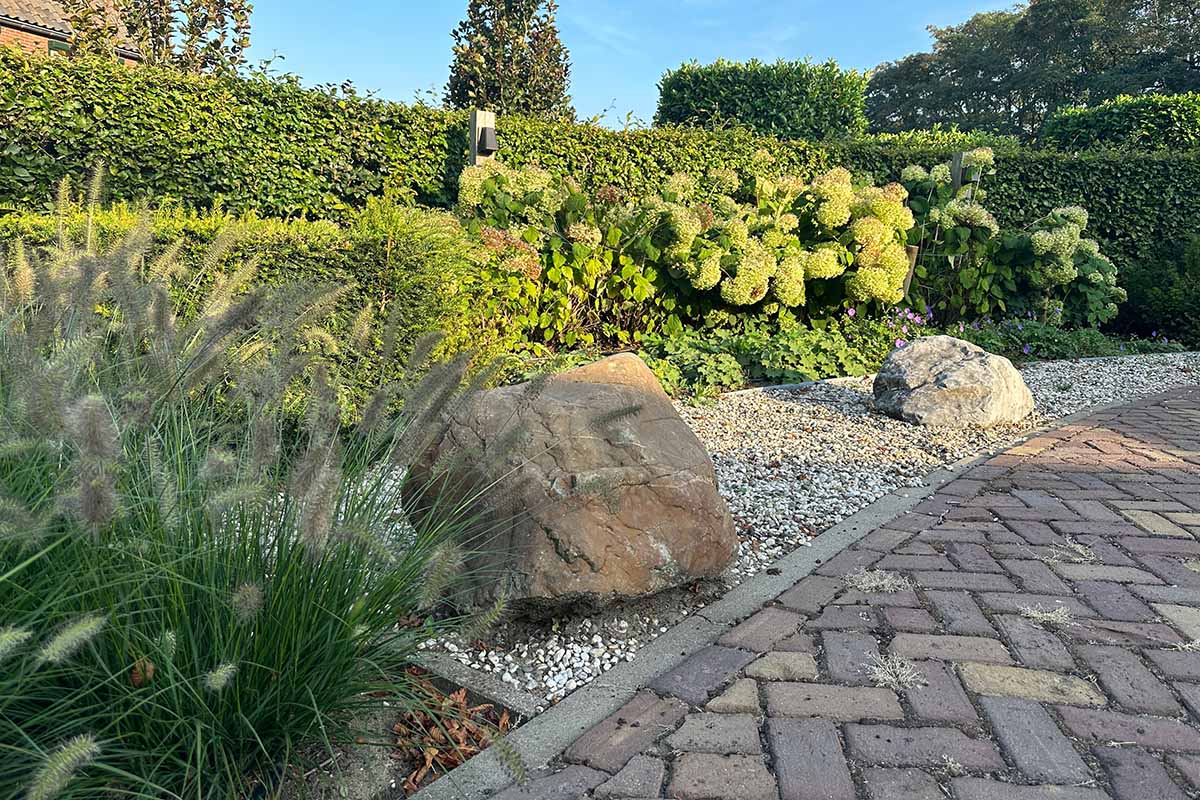
However, there is such a thing as too big. If your property ends up looking more like Stonehenge than a residential landscape, then you should probably dial it back a bit.
Choose Colors Wisely
Color is a powerful tool for setting the mood – so use it!
Use off-white, gray, and ivory hues to create a peaceful vibe. Dark, earthy tones like black and brown radiate power, while bright yellows, reds, and oranges feel lively and upbeat.
Decide which feelings you want to convey, then use color psychology to make it happen.
Contrast With Plantings
Landscaping is a delicate dance of hardscape and softscape, non-living and living, yin and yang. To keep this effect going, make your plantings really contrast with your boulders.

A vibrant, colorful ground cover next to a laid-back rock really emphasizes the appearance of both, kinda like putting a preppy frat dude next to an alternative punk woman. A unique aesthetic can only be appreciated through differentiation, after all.
Placement Tips
Once you’ve got your large stones – and complementary plantings – picked out, here’s where rubber meets the road… or rock meets the soil, I suppose.
In the Ground, Not on the Ground
To really make your landscape look long-lasting, partially bury your boulders in the ground to give the impression they’ve been there for millennia.
If you just set them on the ground, that enduring effect isn’t there.
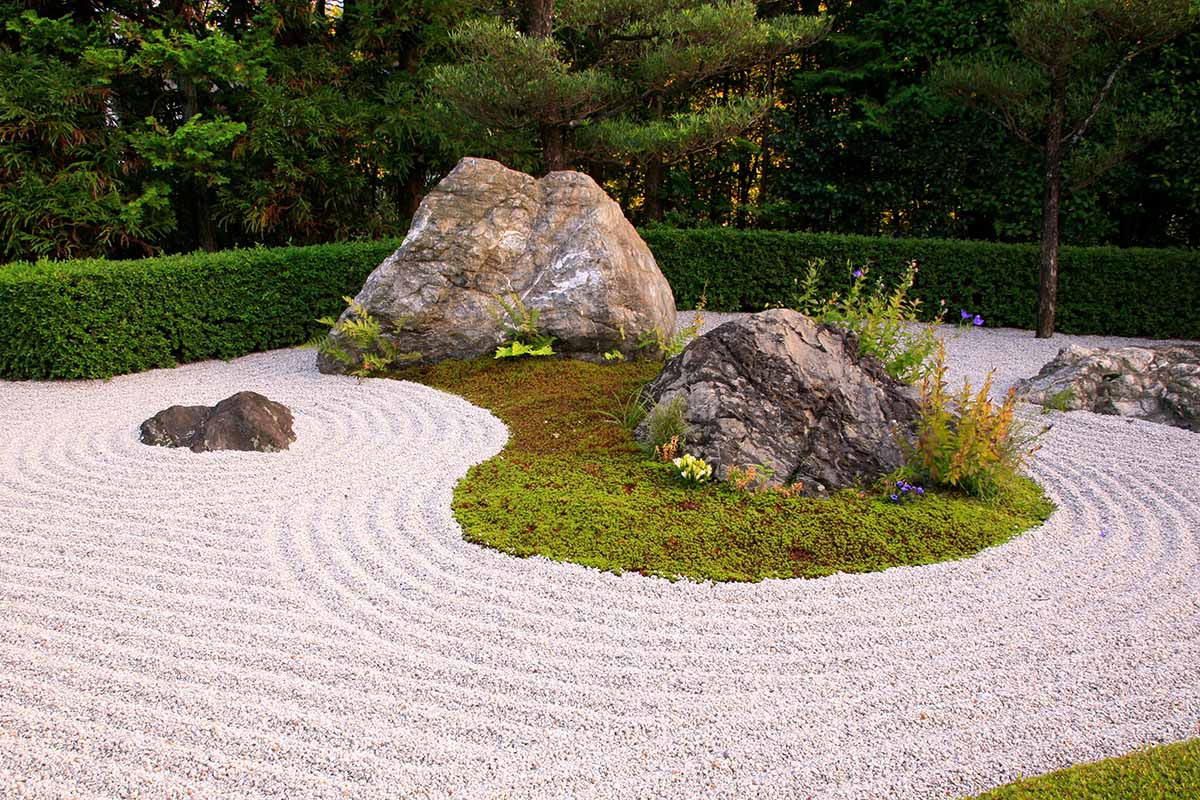
Anywhere from a few inches deep to more than halfway buried is acceptable. As a rule of thumb, the deeper the stone, the older it looks.
This also helps the rocks to remain in place, so bury them deep enough so that they’ll stay anchored, especially on angled slopes!
Go With Grouping
A lone, conspicuous stone in the landscape can look a little unnatural. Or perhaps foreboding, like an ancient civilization’s marker for a sacred, haunted burial ground.
Go with clusters rather than solo stones – it looks more natural. Plus, more boulders!
Create Levels
How boring would a painting look if it was three feet wide and only an inch tall? Same goes for a flat landscape.
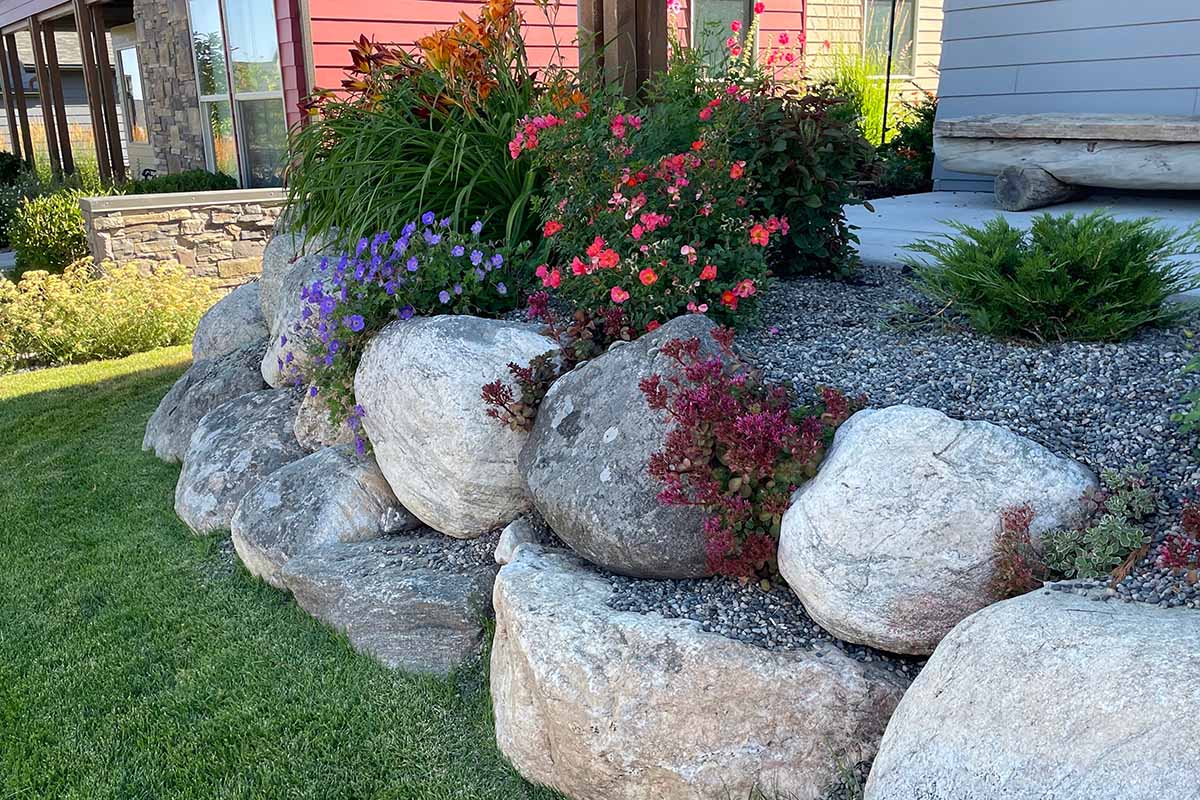
To provide texture and interest to the garden, use your boulders to create elevated surfaces.
Retaining walls, ascending steps, and ridges all create opportunities that you wouldn’t have with a wide, perfectly horizontal landscape.
Keep It Varied
Nature is rarely symmetrical and uniform. So a line of similarly-oriented, practically identical stones definitely throws off that “au naturel” vibe.
Go with odd numbers, varying sizes, and asymmetrical arrangements, and feel free to mix up the types of stones you use, too. Redundancy gets old, even with boulders.
Trust Your Gut
Humans are primed to differentiate natural from unnatural and beautiful from ugly. So if your boulder setup looks weird and unaesthetic to you, don’t ignore that feeling.

It’s your landscape, and if it doesn’t look good to you, then it doesn’t work. Don’t be afraid to make visual edits or veer from the plan if something needs changing, even if it breaks some of the aforementioned “rules.”
Rock On!
Congratulations on making it through this boulder of a guide! Your focus must be stone-cold. Three puns are plenty.

Whether you’re new to large landscape rocks or simply refreshing your know-how, I wish you the best of luck in your future stone endeavors.
May your big ol’ rocks bring your landscape beauty and structure!
Still have questions? Have knowledge of your own to share? Check out the comments section below!
And for more garden design ideas, have a read of these guides next:
